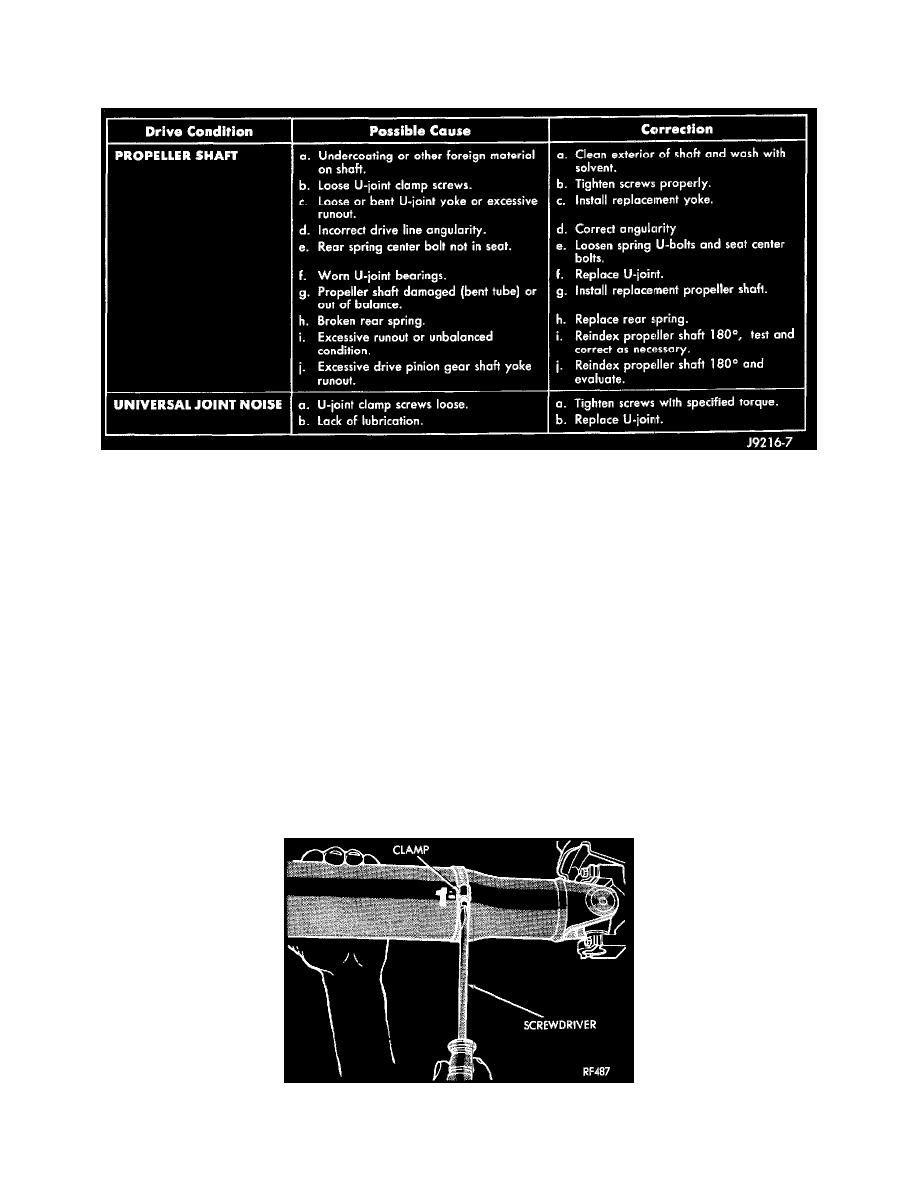Viper GTS V10-488 8.0L (1998)

Drive/Propeller Shaft: Testing and Inspection
PROPELLER SHAFT VIBRATION
Tires that are out-of-round or wheels that are unbalanced will cause a low frequency vibration.
Driveline Vibration
Driveline vibration can also result from loose or damaged engine mounts.
Propeller shaft vibration will increase as the vehicle speed is increased. A vibration that occurs within a specific speed range is not caused by
propeller shaft unbalance. Defective universal joints or an incorrect propeller shaft angle are usually the cause.
PROPELLER SHAFT UNBALANCE
If propeller shaft unbalance is suspected, it can be verified with the following procedure.
NOTE: Removing and re-indexing the propeller shaft 180° may eliminate some vibrations.
Clean all the foreign material from the propeller shaft and the universal joints (mud, undercoating, etc.).
Inspect the propeller shaft for missing balance weights, broken welds, and bent areas. If the propeller shaft is found with any of these conditions,
the shaft must be replaced.
Ensure the universal joints are not worn, are properly installed, and correctly aligned with the shaft.
Check the universal joint clamp screws torque.
Check universal joint angles.
1. Raise and support the vehicle.
2. Remove the wheels/tires. Install the wheel lug nuts to retain the brake discs.
3. Mark and number the propeller shaft tube approximately six inches from the yoke weld end at four positions 90' apart.
4. Run and accelerate the vehicle until vibration occurs. Note the intensity and speed the vibration occurred. Stop the engine.
Clamp Screw At Position 1
5. Install a screw clamp at position 1.
